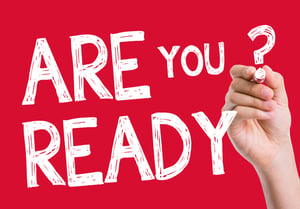 There is no question that just about every region at some point realizes disaster and danger. Whether you’re in the mountains or near the ocean or by a river or in the desert, some kind of risk occurs eventually. It’s simply within the portfolio of nature that natural disasters happen. Add in the what communities and people create, and the odds increase even more. So it would be foolish for any family to assume that they will always be safe 100 percent of the time. Instead, logic and smarts dictate that people should have a response plan or a family emergency plan to follow when things do go wrong.
There is no question that just about every region at some point realizes disaster and danger. Whether you’re in the mountains or near the ocean or by a river or in the desert, some kind of risk occurs eventually. It’s simply within the portfolio of nature that natural disasters happen. Add in the what communities and people create, and the odds increase even more. So it would be foolish for any family to assume that they will always be safe 100 percent of the time. Instead, logic and smarts dictate that people should have a response plan or a family emergency plan to follow when things do go wrong.
Firefighters have a well-known lesson in their industry that people tend to go where they last remember when an emergency happens, which is why everyone should be trained on where emergency exits exist in a building. Otherwise, everybody just tries to go out the entrance since that’s the only way they remember coming into a building. Families in emergencies act the same way; if they don’t have a plan for alternatives, they simply fall back on what they know. And that can make a disaster or emergency worse.
We don’t have crystal balls or the ability to the see the future. But families do have the ability to prepare for an emergency. The first step is to put together a plan for your household so everyone has a basic idea what they are supposed to do in an emergency situation that is absent of any other instruction.
The second step is to identify what is needed for an immediate emergency. In most cases, people are usually able to stabilize and recover their lives and situation in a few weeks. However, the most dangerous time is the first three to ten days in a situation. This is the period when there is little outside help, and a family needs to rely on its own resources the most. That means the family emergency plan needs to incorporate enough supplies and planning to make it through this time window.
Third, the plan should include items of information that can be collected well before the emergency happens so that there’s no need to scramble for it later. This includes collecting identifiable information of everyone in the family (names, birthdays and social security numbers) and registering a family with Smart911.
There should be a detailed plan on where everyone should meet. It’s often the case folks are split up when an emergency happens. This detail should also include where folks are most likely to be (school, work, etc.). The information package should also include insurance documents, family contacts, and medical contacts. Again, the goal is to have all this info in one place so as to not waste time in the emergency looking for it. Non-emergency support contacts help as well. The Federal Emergency Management Agency, or FEMA, has some really good checklist forms on their website that can be used to think of all the major items to include in an emergency plan info package.
Fourth, a family should always have an immediate food and water supply for at least a week. Many times a disaster doesn’t necessarily affect one’s home, but the area could be cut off for a while from access. In these cases having ready food and water allows a family to stay put inside shelter and safety versus traveling and being exposed. Frequently, infrastructure has failed, and traveling can actually increase danger in a disaster versus staying put. If one has food for a week, then there’s a good change greater help will arrive, reducing risk dramatically.
Finally, your family plan should include having some hard cash available. Disasters have repeatedly proven that electronic systems are fragile. Cash can still take care of purchases when the power goes out and credit cards or bank cards don’t work. And that can be the difference in having food and shelter versus sleeping in car and going hungry.
And always stay informed. Use Smart911 to be noticed when problems start.


